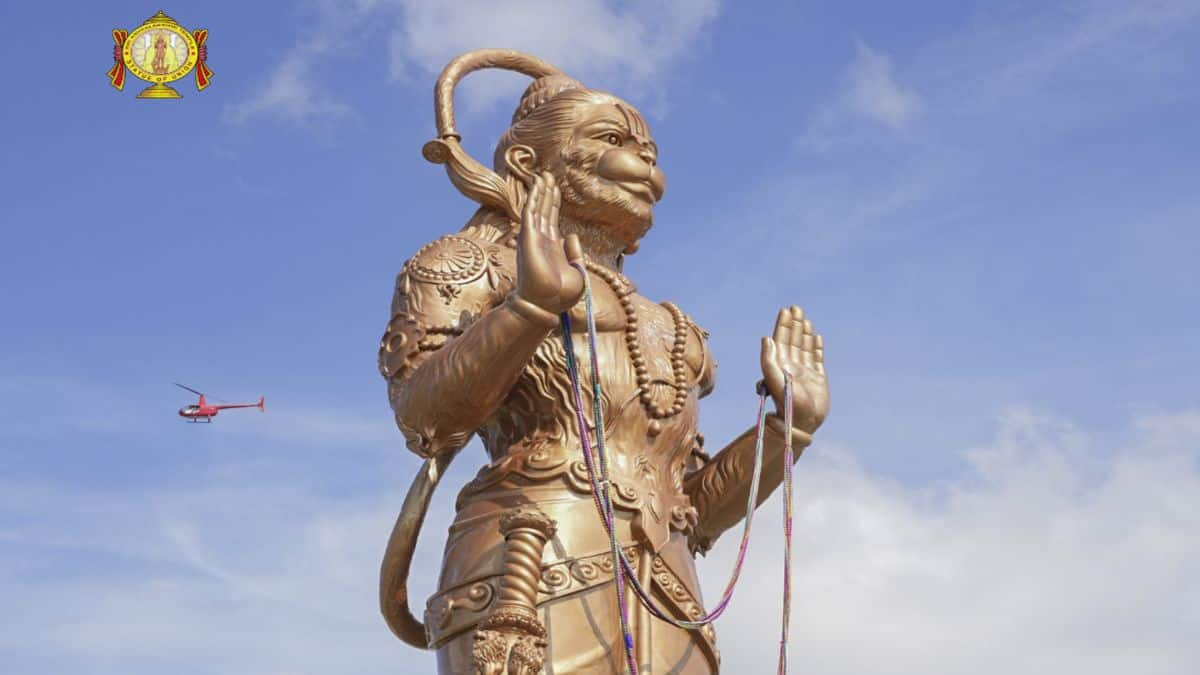This year, India is marking 60 years of victory in the 1965 war with Pakistan.
Last Friday, Defence Minister Rajnath Singh paid tribute to the Indian troops. Singh, addressing veterans of the Indian Armed Forces at New Delhi’s South Block on Friday, hailed their valour.
Singh, at the event, made mention of a number of individuals during the war and celebrated their heroism and bravery.
Among those notables was Abdul Hamid, the Indian soldier who destroyed four Pakistani tanks and was posthumously awarded the Param Vir Chakra.
“Our brave Abdul Hamid taught us that bravery is not about the size of the weapon, but the size of the heart,” Singh said. “Even in the most difficult circumstances, the combination of courage, restraint and patriotism can make the impossible possible.”
But who was Hamid? What do we know about his tale?
Let’s take a closer look.
Who was he?
Hamid was born on July 1, 1933, in British India into a farming family in Uttar Pradesh’s Dhamupur village in Ghazipur district. He is said to have joined the Indian Army at a very young age. He was made the Company Quarter Master Havildar (CQMH) in the Indian Army and served with the 4th Grenadiers Battalion.
India and Pakistan had already fought one war over Kashmir in 1947. Then, in 1965, Pakistan launched Operation Gibraltar against India. The conflict, which had been simmering since April when the two sides skirmished along the Rann of Kutch, exploded after Pakistani troops invaded Jammu and Kashmir in August 1965. The conflict would witness the biggest tank battles since World War II.
At the time, India was firmly in the corner of the Soviet Union, while Pakistan was in the embrace of America. Islamabad had secured $1.5 billion in military aid from Washington, an outrageous sum, after signing a defence pact in 1954. It had access to American hardware including the legendary Patton tanks made famous by the United States during World War II.
On 8 September, Pakistan attempted to take Amritsar in Punjab. It is here, at the Battle of Asal Uttar (Real Reply) – which witnessed one of the biggest instances of tank warfare since World War II – that Hamid became a national hero.
The Battle of Asal Uttar
The battle, which occurred in Punjab’s Khemkaran sector, took place from 8 to 10 September. It saw India’s 4 Mountain Division, supported by local infantry and artillery, go up against armoured units from Pakistan including the famed Patton tanks in Punjab’s Tarn Taran district, north of Khemkaran.
The Indian troops were heavily outgunned when it came to weapons. But Hamid and his company took up positions in the dense sugarcane fields and waited for the enemy anyway.
“The fields are rustling with sugar cane and even as Hamid sits in the passenger seat of his jeep, which has mounted on it a recoilless (RCL) gun, he can hear the wind. The jeep trundles over a narrow mud track ahead of Cheema village… Taking cover behind the tall crop, Hamid points his gun in their direction and then waits. The Grenadiers hold their fire so as not to warn the enemy,” Rachna Bisht Rawat wrote in The Brave: Param Vir Chakra Stories.
“Just as the tanks come within 30 yards, Hamid asks his loader to load the gun and shoot. He watches the shell go up and arch towards the first enemy tank. Even as he picks up his binoculars, he hears the blast. The tank is burning in front of his eyes. Hamid and his men rejoice. ‘Shabaash!’, he mouths, and they exchange wide smiles,” Rawat added.
Hamid, standing on his jeep on which a recoilless (RCL) gun was mounted, destroyed at least four tanks during the battle at great risk to himself. He is said to have disabled a fifth tank and taken out a sixth. Unfortunately, he would not survive the battle
“The next tank and Abdul Hamid spotted each other simultaneously. Being alone, he could not change his position, so he reloaded his weapon and traversed it. The Pakistani tank gunner and Abdul Hamid placed each other in the cross-hairs of their sights together and fired nearly simultaneously. Abdul Hamid was killed instantly. It is not clear whether the enemy tank was also destroyed. The battalion history, however, states that both fired simultaneously and blew each other to bits,” wrote Major General Ian Cardozo in his book.
While Hamid was officially credited for taking out four Pakistani tanks, other sources have claimed the number could be anywhere from eight to nine and even as high as 12. The battle dealt a heavy blow to Pakistan’s ambitions in Punjab. Experts said dozens of Pakistani tanks were destroyed or simply abandoned in the battle. So much so that the area was nicknamed ‘Patton’s Graveyard’.
Indian troops would then go on the offensive – crossing the border into Pakistan’s Punjab, following which the United Nations called for a ceasefire.
Legacy
Hamid was awarded the Param Vir Chakra – India’s highest wartime gallantry honour – for his actions. He is remembered as a national hero and a symbol of bravery and sacrifice in the Indian Army. Hamid’s heroics during the 1965 war have seen him being celebrated in history books and in military accounts of the conflict.
Hamid’s grave and a war memorial are located near Chima Village on the Khemkaran-Bhikhiwind Road in Punjab. The Indian Army, which holds a remembrance in his honour every year, maintains the site. A captured Pakistani Patton tank is proudly displayed at the entrance of the memorial in homage to his valour.
Several schools, roads, and institutions in India have been named after him, including Shaheed Abdul Hamid Vidyalaya in Ghazipur. However, in February, Hamid’s family objected after the primary school in question changed its name to the “PM Shri Composite School.” Authorities restored the name of the school after the outcry.
With inputs from agencies


)

)
)
)
)
)
)
)
)



